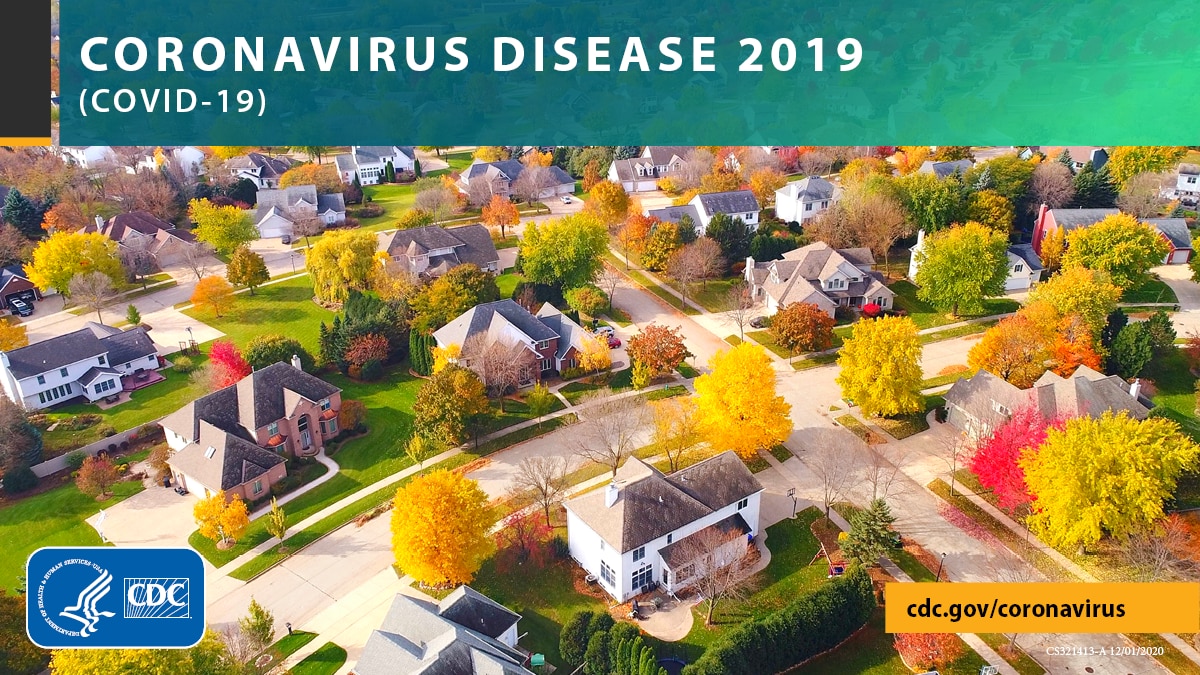Ventilation
Written by COVID-19 NEWS on June 1, 2021

Research shows that the particle size of SARS-CoV-2 is around 0.1 micrometer (µm). However, the virus generally does not travel through the air by itself. These viral particles are human-generated, so the virus is trapped in respiratory droplets and droplet nuclei (dried respiratory droplets) that are larger. Most of the respiratory droplets and particles exhaled during talking, singing, breathing, and coughing are less than 5 µm in size. By definition, a High Efficiency Particulate Air (HEPA) filter is at least 99.97% efficient at capturing particles 0.3 µm in size. This 0.3 µm particle approximates the most penetrating particle size (MPPS) through the filter. HEPA filters are even more efficient at capturing particles larger and smaller than the MPPS. Thus, HEPA filters are no less than 99.97% efficient at capturing human-generated viral particles associated with SARS-CoV-2.
Portable HEPA filtration units that combine a HEPA filter with a powered fan system are a preferred option for auxiliary air cleaning, especially in higher risk settings such as health clinics, vaccination and medical testing locations, workout rooms, or public waiting areas. Other settings that could benefit from portable HEPA filtration can be identified using typical risk assessment parameters, such as community incidence rates, facemask compliance expectations, and room occupant density. While these systems do not bring in outdoor dilution air, they are effective at cleaning air within spaces to reduce the concentration of airborne particulates, including SARS-CoV-2 viral particles. Thus, they give effective air exchanges without the need for conditioning outdoor air.
In choosing a portable HEPA unit, select a system that is appropriately sized for the area in which it will be installed. This determination is made based on the air flow through the unit, which is typically reported in cubic feet per minute (cfm). Many portable HEPA filtration units are assigned a Clean Air Delivery Rate (CADR) (See EPA’s Guide To Air Cleaners In The Homeexternal icon), which is noted on a label in the operators manual, on the shipping box, and/or on the filtration unit itself. The CADR is an established standard defined by the Association of Home Appliance Manufacturers (AHAM). Participating portable air cleaner manufacturers have their products certified by an independent laboratory, so the end user can be assured it performs according to the manufacturer’s claims. The CADR is generally reported in cfm for products sold in the United States. The paragraphs below describe how to select an appropriate air cleaner based on the size of the room in which it will be used. The procedure below should be followed whenever possible. If an air cleaner with the appropriate CADR number or higher is not available, select a unit with a lower CADR rating. The unit will still provide incrementally more air cleaning than having no air cleaner at all.
In a given room, the larger the CADR, the faster it will clean the room air. Three CADR numbers are given on the AHAM label, one each for smoke, dust, and pollen. The smoke particles are the smallest, so that CADR number applies best to viral particles related to COVID-19. The label also shows the largest room size (in square feet, ft2) that the unit is appropriate for, assuming a standard ceiling height of up to 8 feet. If the ceiling height is taller, multiply the room size (ft2) by the ratio of the actual ceiling height (ft) divided by 8. For example, a 300 ft2 room with an 11-foot ceiling will require a portable air cleaner labeled for a room size of at least 415 ft2 (300 × [11/8] = 415).
The CADR program is designed to rate the performance of smaller room air cleaners typical for use in homes and offices. For larger air cleaners, and for smaller air cleaners whose manufacturers choose not to participate in the AHAM CADR program, select a HEPA unit based on the suggested room size (ft2) or the reported air flow rate (cfm) provided by the manufacturer. Consumers might take into consideration that these values often reflect ideal conditions which overestimate actual performance.
For air cleaners that provide a suggested room size, the adjustment for rooms taller than 8 feet is the same as presented above. For units that only provide an air flow rate, follow the “2/3 ruleexternal icon” to approximate a suggested room size. To apply this rule for a room up to 8 feet tall, choose an air cleaner with an air flow rate value (cfm) that is at least 2/3 of the floor area (ft2). For example, a standard 300 ft2 room requires an air cleaner that provides at least 200 cfm of air flow (300 × [2/3] = 200). If the ceiling height is taller, do the same calculation and then multiply the result by the ratio of the actual ceiling height (ft) divided by 8. For example, the 300 ft2 room described above, but with an 11-foot ceiling, requires an air cleaner that can provide at least 275 cfm of air flow (200 × [11/8] = 275).
While smaller HEPA fan systems tend to be stand-alone units, many larger units allow flexible ductwork to be attached to the air inlet and/or outlet (note that larger ducted units don’t fall under the “room air cleaner” description and may not have a CADR rating). Using ductwork and placing the HEPA system strategically in the space can help provide desired clean-to-less-clean airflow patterns where needed. Ducted HEPA systems can also be used to establish direct source capture interventions for patient treatment and /or testing scenarios (See CDC/NIOSH discussion on Ventilated Headboard). Depending on the size of the HEPA fan/filter units and how the facility in which they are being used is configured, multiple small portable HEPA units deployed to high risk areas may be more useful than one large HEPA unit serving a combined space.
Example 2. Given: The room described in Example 1 is now augmented with a portable HEPA air cleaning device with a smoke CADR of 120 cfm (Qhepa = 120 cfm). The added air movement within the room improves overall mixing, so assign k = 3.
Question: How much time is saved to achieve the same 99% reduction in airborne contaminants by adding the portable HEPA device to the room?
Solution: The addition of the HEPA filter device provides additional clean air to the room. Here, the clean volumetric air flow rate (Q) is: Q = Qe + Qhepa = 80 cfm + 120 cfm = 200 cfm.
ACH = [Q x 60] / (room volume) = (200 cfm x 60) / (12’ x 10’ x 10’) = 12,000/1,200 = 10 ACH.
Using Table B.1, the perfect mixing wait time based on 10 ACH and a 99% reduction of airborne particles is 28 minutes.
Using the mixing factor of 3, the estimated wait time for 99% reduction of airborne contaminants in the room is 3 x 28 = 84 minutes. Thus, the increased ACH and lower k value associated with the portable HEPA filtration unit reduced the wait time from the original 5 hours and 45 minutes to only 1 hour and 24 minutes, saving a total of 4 hours and 21 minutes before the room could be safely reoccupied.
Adding the portable HEPA unit increased the effective ventilation rate and improved room air mixing. This resulted in over a 75% reduction in time for the room to be cleared of potentially-infectious airborne particles.






